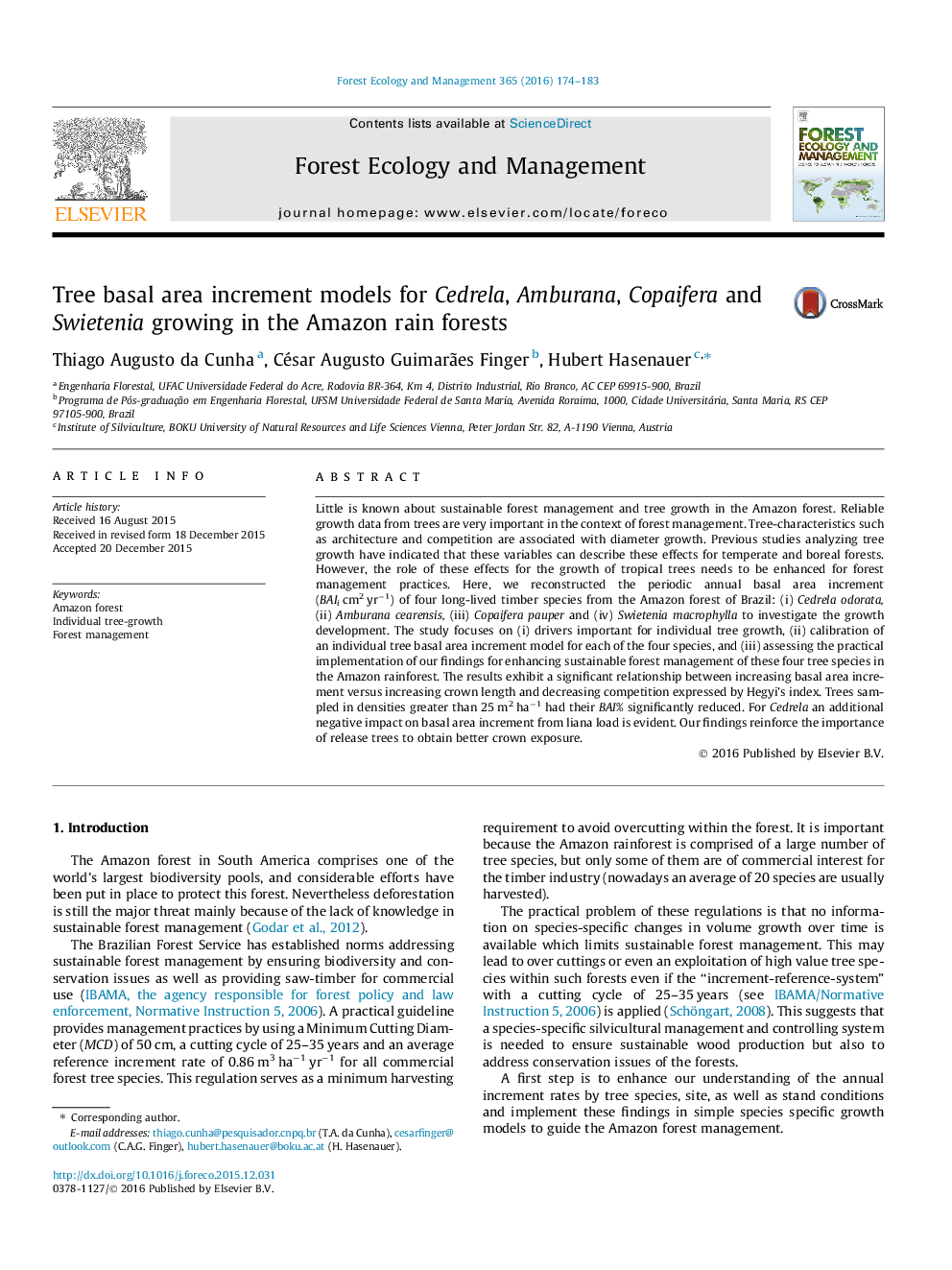| Article ID | Journal | Published Year | Pages | File Type |
|---|---|---|---|---|
| 6542367 | Forest Ecology and Management | 2016 | 10 Pages |
Abstract
Little is known about sustainable forest management and tree growth in the Amazon forest. Reliable growth data from trees are very important in the context of forest management. Tree-characteristics such as architecture and competition are associated with diameter growth. Previous studies analyzing tree growth have indicated that these variables can describe these effects for temperate and boreal forests. However, the role of these effects for the growth of tropical trees needs to be enhanced for forest management practices. Here, we reconstructed the periodic annual basal area increment (BAIi cm2 yrâ1) of four long-lived timber species from the Amazon forest of Brazil: (i) Cedrela odorata, (ii) Amburana cearensis, (iii) Copaifera pauper and (iv) Swietenia macrophylla to investigate the growth development. The study focuses on (i) drivers important for individual tree growth, (ii) calibration of an individual tree basal area increment model for each of the four species, and (iii) assessing the practical implementation of our findings for enhancing sustainable forest management of these four tree species in the Amazon rainforest. The results exhibit a significant relationship between increasing basal area increment versus increasing crown length and decreasing competition expressed by Hegyi's index. Trees sampled in densities greater than 25 m2 haâ1 had their BAI% significantly reduced. For Cedrela an additional negative impact on basal area increment from liana load is evident. Our findings reinforce the importance of release trees to obtain better crown exposure.
Keywords
Related Topics
Life Sciences
Agricultural and Biological Sciences
Ecology, Evolution, Behavior and Systematics
Authors
Thiago Augusto da Cunha, César Augusto Guimarães Finger, Hubert Hasenauer,
